MediaTek Dimensity 6020
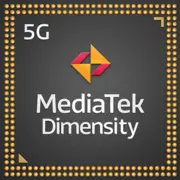
MediaTek Dimensity 6020: A Balance of Power and Affordability in 2025
Overview of the Mid-Range Smartphone Processor
Introduction
The mobile processor market in 2025 continues to evolve, offering users more capabilities for less money. The MediaTek Dimensity 6020, introduced in 2023, remains relevant due to its successful combination of performance, energy efficiency, and support for modern technologies. This chip has become the foundation for numerous budget and mid-range smartphones, but how good is it in the realities of 2025? Let’s delve into the details.
1. Architecture and Process Technology: What’s Inside?
The Dimensity 6020 is built on a 7nm process technology, ensuring a balance between performance and power consumption. Its architecture includes:
- 8 CPU Cores: Two clusters — high-performance Cortex-A76 (2.2 GHz) and energy-efficient Cortex-A55 (2.0 GHz). This classic "2+6" scheme allows two cores to handle resource-intensive tasks while six manage background processes.
- Mali-G57 MP2 GPU: A dual-core graphics accelerator optimized for gaming rendering and interface operation.
- Cache Memory: 1 MB of L2 cache for quick data access.
Technological Features:
- Power Consumption (TDP 6W): Thanks to the 7nm process and dynamic frequency management, the chip conserves battery charge efficiently.
- Memory Support: LPDDR4X up to 12 GB and UFS 2.2, which ensures quick application loading.
2. Performance in Real Tasks
Gaming:
The Mali-G57 MP2 can handle games like Genshin Impact at medium settings (30-40 FPS), though it may experience drops in demanding scenes. For games like PUBG Mobile or Call of Duty: Mobile at high settings, it’s recommended to activate the "High Frame Rate" mode (up to 60 FPS). It is important to have a cooling system in the smartphone; without it, there may be throttling after 20-30 minutes of gaming.
Multimedia:
- Displays: Supports resolutions up to Full HD+ (2520x1080) and refresh rates of 120 Hz.
- Video: Hardware decoding for 4K@60fps (H.265, H.264, VP9) and supports capture up to 64 MP for photos and 2K@30fps for video.
AI Tasks:
Basic scenarios such as object recognition in frames or adaptive charge optimization work reliably, but lack of specialized NPU may hamper complex tasks (e.g., photo processing in neural network styles).
Power Consumption:
A smartphone with a 5000 mAh battery and Dimensity 6020 withstands 8-10 hours of active use (web surfing, social media, video). In power-saving mode, it can last up to 2 days.
3. Built-in Modules: Connectivity and Navigation
- 5G Modem: Supports Sub-6 GHz (but not mmWave), which is relevant for most networks in 2025. Download speeds can reach up to 2.77 Gbps.
- Wi-Fi 5 and Bluetooth 5.2: Sufficient for streaming HD video and connecting wireless accessories.
- Navigation: GPS, GLONASS, Galileo, BeiDou — fast and accurate location determination.
Con: Absence of Wi-Fi 6 and Bluetooth 5.3 may be critical for users of advanced gadgets (such as LE Audio headphones).
4. Comparison with Competitors
MediaTek Dimensity 6020 vs Snapdragon 4 Gen 2:
- Performance: The Snapdragon 4 Gen 2 (Geekbench 6: Single-Core 750, Multi-Core 2000) is slightly faster, but the difference in gaming is negligible.
- Energy Efficiency: Both chips are close in TDP, but Qualcomm has better optimization for heavy loads.
- Price: Smartphones with Dimensity 6020 are generally 10-15% cheaper (around $200 versus $230).
MediaTek Dimensity 6020 vs Exynos 1280:
- Graphics: Mali-G57 MP2 lags behind the Mali-G68 in Exynos 1280 (15-20% in 3DMark tests).
- 5G Support: Both processors provide stable connectivity.
Conclusion: Dimensity 6020 is optimal for those seeking a device under $250 with 5G.
5. Usage Scenarios
- Gaming: Suitable for casual games and mid-range models with active cooling (e.g., Realme 10 Pro).
- Daily Tasks: Social media, streaming, multitasking — no lags.
- Photography and Video: Cameras up to 108 MP (with multi-shot support), but for advanced HDR or night shooting, a flagship is a better choice.
6. Pros and Cons
Pros:
- Low power consumption.
- 5G support.
- Affordable device pricing.
Cons:
- Weak GPU for AAA games.
- Lack of Wi-Fi 6.
7. Practical Tips for Choosing a Smartphone
- Cooling: Look for models with copper tubes or graphene coating (e.g., Xiaomi Redmi Note 13).
- Battery: Optimal — 5000 mAh and support for fast charging of 30W+.
- Screen: AMOLED with a refresh rate of 90-120 Hz will fully unleash the processor's potential.
Examples of 2025 Devices:
- Realme 10 Pro ($220): 6.7" AMOLED, 67W charging, 50 MP camera.
- Xiaomi Redmi Note 13 ($240): 120 Hz display, stereo speakers.
8. Final Conclusion: Who is the Dimensity 6020 For?
This processor is suitable for those who:
- Do not want to overpay for a flagship but desire 5G and a smooth interface.
- Use their smartphone for work, streaming, and light gaming.
- Value battery life (up to 2 days on standby).
Main Benefits: The balance of price and quality, support for modern communication standards, and sufficient performance for most tasks.
Conclusion
The MediaTek Dimensity 6020 remains a relevant option for the budget segment two years after its release. While it may not be groundbreaking, it reliably gets the job done, making technology accessible. If you are looking for a smartphone under $250 without compromising on basic functionalities, this is your choice.
Basic
6x 2 GHz – Cortex-A55
GPU Specifications
Connectivity
Memory Specifications
Miscellaneous
Benchmarks
Phones with Dimensity 6020

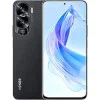
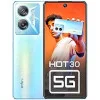


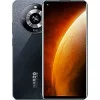
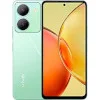
Comparison of Devices with Dimensity 6020
Compared to Other SoC
Share in social media
Or Link To Us
<a href="https://cputronic.com/en/soc/mediatek-dimensity-6020" target="_blank">MediaTek Dimensity 6020</a>